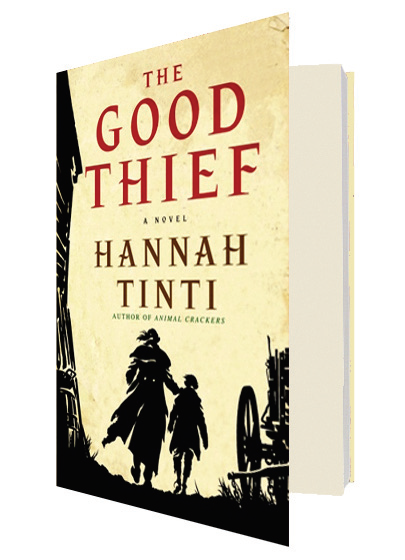CENTRAL QUESTION:
How does a Dickensian orphan finally find his way home?
If the prototypical novelist opens doors to the past, future, and parallel present, then short-fiction writers tend to focus on the moment, zeroing in on a specific, but cosmic, truth. A consummate story writer, Hannah Tinti certainly fits the mold. Her 2004 debut, Animal Crackers, is a collection of eleven nouveau-gothic tales about peculiar encounters with nonhuman beasts, and her economical prose is so perfectly suited to the intensity of the short form that her first foray into novel-writing could’ve been disastrous. But thankfully, Tinti has read her Dickens, delivering in The Good Thief a throwback as entertaining as it is finely tuned, and as playful as it is precise.
Set in industrial New England sometime in the nineteenth century, The Good Thief centers on Ren, an eleven-year-old orphan with a knack for petty theft whose left hand was severed before his first memories kicked in. Raised by wine-drinking Catholic monks, he’s soon adopted by Benjamin Nab, a charismatic story teller who claims to be his brother. Together, they embark on a madcap, picaresque adventure, with Ren seeking knowledge of his parents, and Benjamin seeking recent graves to rob. A mass of freaks and low-lifes greet them along the way, including a deaf landlady, a roof-dwelling dwarf, a hungry surgeon, a mousetrap magnate, and a killer giant resurrected from the dead.
Historical novels don’t just pose a research challenge—they pose a stylistic one, too. Contemporary writers enamored with nineteenth-century bombast often find themselves aping the ornate Victorians, producing stylistically hackneyed novels that ring false to modern readers. Here, Tinti’s spare, modern voice, honed on her stories, is an asset. Refusing the temptation to mimic, she takes a page from Edward P. Jones in The Known World, giving us a nineteenth century that is richly felt, but observed with a modern eye. Never has ship building been described so elegantly: “On another schooner the builders were in the middle of setting the mast, a giant tree trunk planed of branches and covered with grease, slowly hauled into place with ropes, and sliding down through the heart of the ship.”
Like many young American writers, Tinti deals in the quirky comedy of stereotypes—the landlady Mrs. Sands shouts all her dialogue, and Dolly the giant’s lumbering body is frequently played for a laugh. It’s a risky choice for a contemporary writer, and for every tender success (Elizabeth McCracken’s The Giant’s House) there’s at least one failure (Marisha Pessl’s Special Topics in Calamity Physics). Here again, Tinti’s short-form training and thoughtful reading bail her out. Like Dickens, she works the...
You have reached your article limit
Sign up for a digital subscription and continue reading all new issues, plus our entire archives, for just $1.50/month.
Already a subscriber? Sign in





